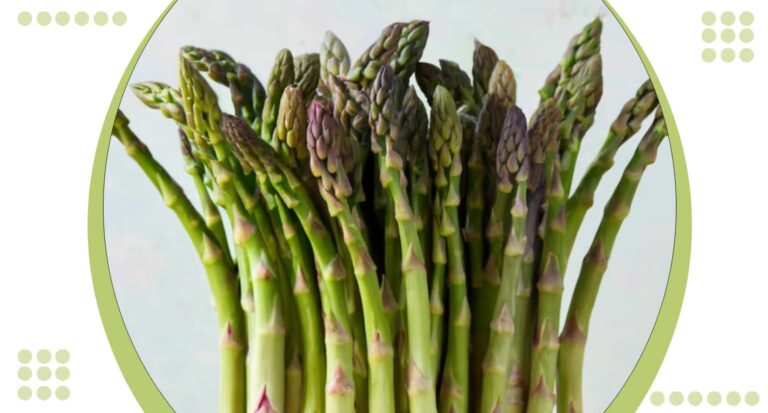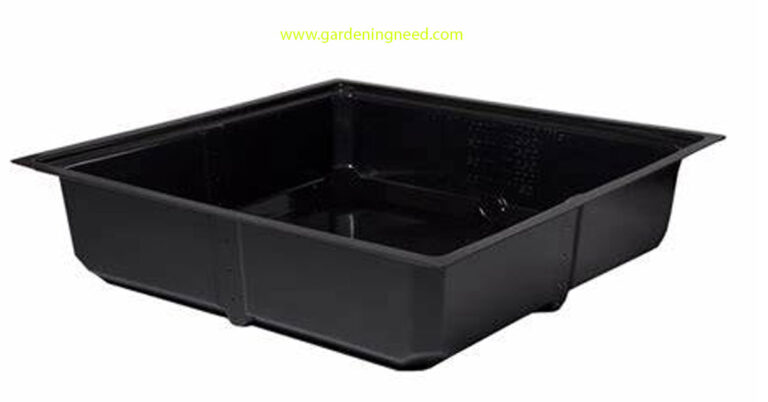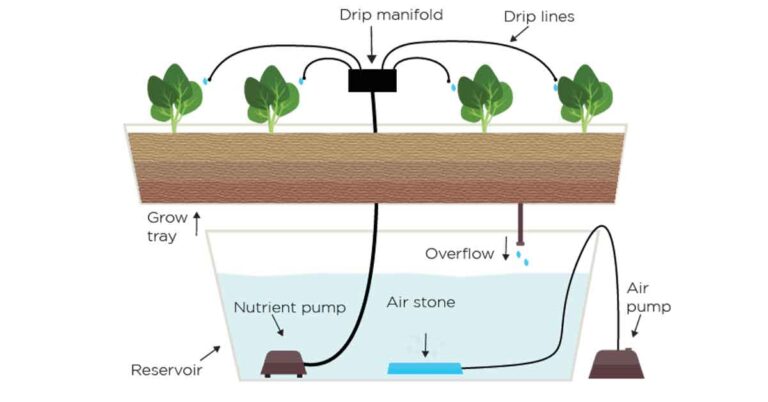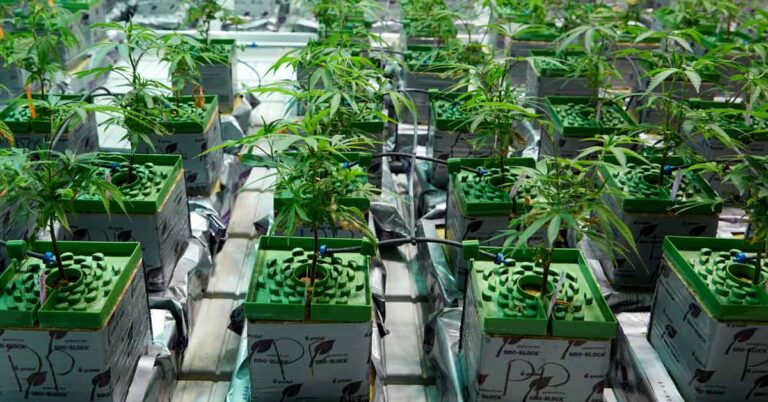Hydroponics Ballast
Hydroponics ballast is a critical component in a hydroponic growing system that helps regulate the power supply to high-intensity grow lights.
It serves a crucial role in maintaining optimal light conditions, enabling plant growth by providing a consistent, steady electrical current to the lighting system.
This ensures the lights operate safely and efficiently, thus contributing to a successful hydroponic cultivation.
What a Hydroponic Ballast Is – Defining the Basics
A hydroponic ballast, in its most fundamental sense, is an electrical device that can regulate the voltage and current supplied to a grow light.
It’s similar in function to a ballast used in fluorescent lighting systems, acting as a power conditioner that controls the amount of electricity that reaches the bulb.
Without a ballast, grow lights can draw too much electricity and overheat, potentially leading to premature failure or even a fire hazard.
Therefore, the ballast’s primary role in a hydroponic system is to provide a stable, controlled power supply, promoting both safety and the longevity of the grow lights.
Exploring Different Types of Ballasts Available in the Market
There are primarily three types of ballasts available in the market: Magnetic Ballasts, Digital Ballasts, and Electronic Ballasts.
- Magnetic Ballasts: These are the traditional type of ballast and are often the most affordable. They operate at a high temperature and make some noise, but they are reliable and have been used for years in various lighting applications.
- Digital Ballasts: Known for their efficiency, digital ballasts use microprocessors to control the electric current. They produce less heat, run quietly, and can adjust to different types of bulbs. However, they tend to be more expensive.
- Electronic Ballasts: A modern alternative to magnetic ballasts, electronic ballasts are efficient and quiet. They are lightweight, produce minimal heat, and are generally easier to install. However, their lifespan can be shorter than other types of ballasts.
Each type of ballast has its pros and cons, and the choice relies heavily on the specific requirements of your hydroponic system.
Advantages of Using a Dedicated Ballast for Hydroponics Growing
Using a dedicated ballast for your hydroponic growing system comes with several significant advantages.
- Improved Plant Growth: A dedicated ballast ensures that your grow lights operate at optimal efficiency, providing plants with the right amount and quality of light they need for photosynthesis, thus promoting better plant growth.
- Safety: Ballasts prevent overloading of electrical current that can cause overheating and potentially lead to fires. By regulating the power supply, ballasts ensure a safe growing environment for your hydroponics system.
- Longevity of Grow Lights: By providing a consistent electrical current, a dedicated ballast can extend the lifespan of your grow lights, saving you the cost of frequent replacements.
- Energy Efficiency: Certain types of ballasts, such as digital and electronic ones, are designed to maximize energy efficiency, leading to substantial savings in electricity costs over time.
- Flexibility: Some advanced ballasts are versatile and compatible with various types of bulbs, offering grower’s flexibility and convenience in their choice of lighting for the hydroponic system.
Remember, a high-quality ballast can make a significant difference in the success of your hydroponic growing system. It is an investment worth considering for any serious hydroponic grower.
Choosing the Right Ballast for Your Needs – Factors to Consider
When choosing the right ballast for your hydroponic system, several factors should be taken into account to ensure you make the best decision for your specific needs:
- Type of Grow Lights: Different ballasts are designed to work with specific types of grow lights. Therefore, the type of light you’re using in your hydroponics system will significantly influence your choice of ballast.
- Energy Efficiency: If energy conservation is a priority, consider digital or electronic ballasts which are designed to maximize energy efficiency.
- Noise Level: Some ballasts, especially magnetic ones, can produce a noticeable level of noise while operating. If your growing area requires a quiet environment, opt for digital or electronic ballasts which run more quietly.
- Heat Output: All ballasts generate heat, but the amount varies across different types. If you’re growing in a small or enclosed space, consider a ballast that produces less heat to avoid overheating your hydroponic garden.
- Budget: Your budget may also influence your choice of ballast. While digital and electronic ballasts offer a range of benefits, they are more expensive than traditional magnetic ballasts.
- Longevity: The lifespan varies among ballast types. While electronic ballasts are lightweight and efficient, they may not last as long as their magnetic counterparts.
Making a careful consideration based on these factors will ensure that you select the right ballast for your hydroponic system, promoting a safe, efficient, and productive growing environment.
The Benefits of Using LED Ballasts Over Fluorescent Models
LED Ballasts offer several advantages over their fluorescent counterparts, making them an increasingly popular choice for hydroponic growers.
- Energy Efficiency: LED Ballasts are known for their superior energy efficiency. They waste less energy as heat and more is converted into light, reducing the overall electricity costs.
- Longer Lifespan: LED lights tend to have a longer lifespan compared to fluorescent lights, which means they need to be replaced less frequently. This longevity reduces maintenance costs and makes your hydroponic system more sustainable in the long run.
- Better Light Quality: LED lights produce a broad spectrum of light, which is beneficial for plant growth. They can be tailored to emit specific light wavelengths that are optimal for photosynthesis, making them superior for plant growth compared to the limited spectrum of fluorescent lights.
- Less Heat Output: LED lights emit less heat than fluorescent lights. This is particularly useful in a hydroponic setup where excess heat can harm plants or lead to issues such as algae growth.
- Dimmable: Many LED lights are compatible with dimmable ballasts. This feature allows growers to control the intensity of light, giving them more control over the growing conditions.
- Durability: LED lights are more robust and less prone to damage than fluorescent lights.
While LED ballasts might be more expensive initially, their benefits in terms of energy efficiency, longevity, light quality, and control make them a worthwhile investment for hydroponic growers.
Setting Up and Running a Hydroponic Ballast System Safely and Successfully
Setting up and running a hydroponic ballast system requires meticulous planning, proper setup, and regular maintenance to ensure safe and successful operation. Here are some key steps you should follow:
1. Choosing the Right Location: Choose a location that is dry and well-ventilated. Avoid places where the ballast will be exposed to water or excessive humidity, as this can lead to electrical failures and other safety hazards.
2. Proper Installation: Follow the manufacturer’s instructions for installation. Use the right mounting equipment and make sure the ballast is securely fastened to avoid any mishaps.
3. Connecting the Lights: Connect your grow lights to the ballast properly. Ensure that all connections are tight and secure. Remember, loose connections can lead to electrical shorts and faulty operation.
4. Regular Maintenance: Regularly check the ballast for any signs of wear and tear. Clean it regularly to avoid dust accumulation which can cause overheating.
5. Safety Precautions: Always turn off and unplug the ballast before doing any type of maintenance. This will prevent any accidental shocks or electrical fires.
6. Using a Surge Protector: A surge protector can safeguard your ballast from any sudden increases in voltage and extend its lifespan.
Remember, safety should be your priority when dealing with electrical equipment like a ballast. By adhering to these guidelines, you can ensure that your hydroponic ballast system runs smoothly and successfully, contributing to the prosperous growth of your plants.
Conclusion
By now, it should be clear that hydroponics ballast is a great choice for anyone looking to get started with hydroponic gardening. Not only is it simple and straightforward, but it’s also cost-effective and efficient.
When combined with other components such as nutrient solutions, growing mediums, and plant systems, the results can be absolutely stunning and yield large bounties of fruit and vegetables.
For those new to hydroponics or experienced gardeners interested in expanding their skills, hydroponics ballast is a reliable and enjoyable way to get the most out of your plants.
Finally, don’t forget to look into different supplies if money is an issue – second-hand or used ballasts often provide surprisingly good value at economical rates! Start today with the understanding that using a hydroponics ballast can help take your gardening to the next level. Happy planting!







